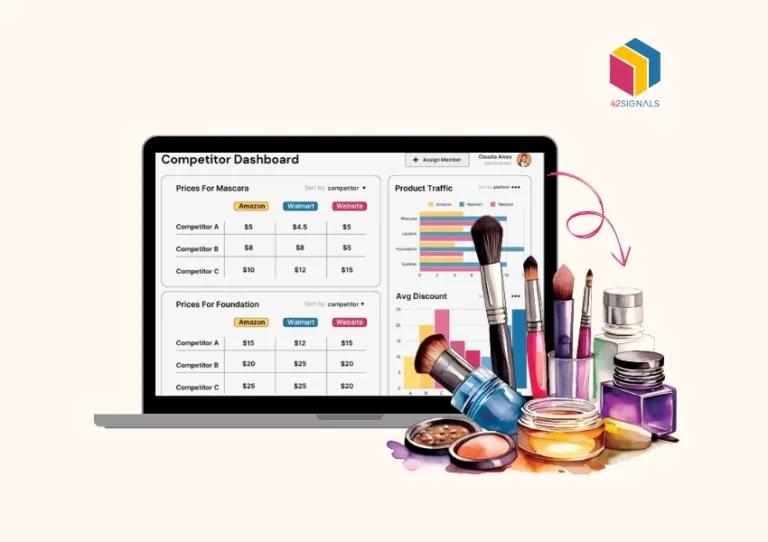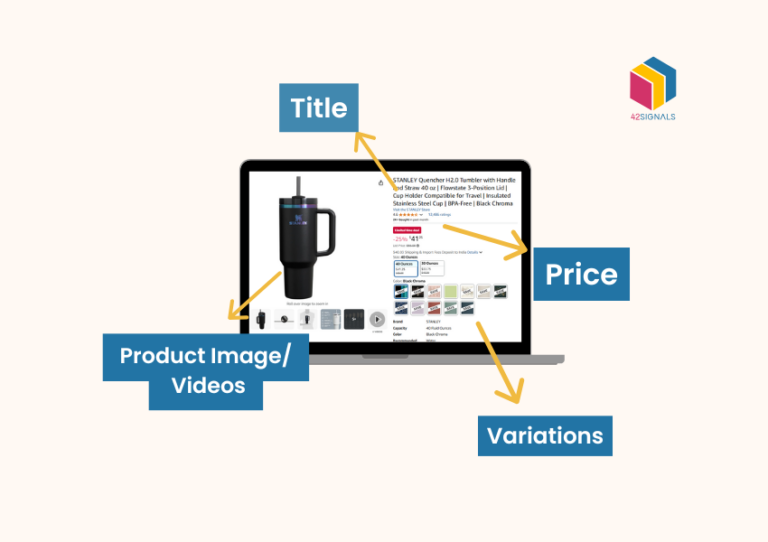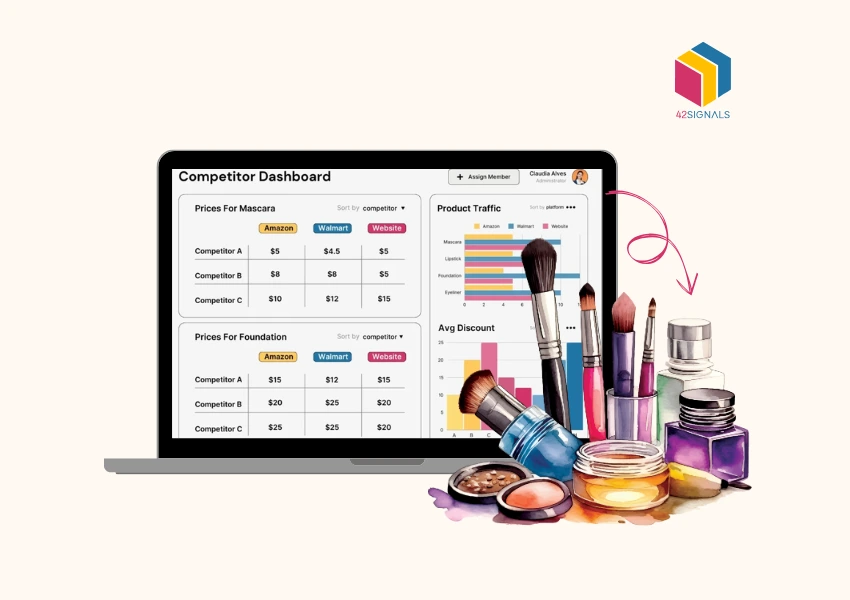The story of e-commerce is one of transformative shifts and rapid adaptations, set against the larger backdrop of the digital revolution. To understand the evolution of the online retail industry, we need to go back in time and look at its origins, how technological advancements aided its journey, and the shifts in consumer behavior. E-commerce analysis helps us understand where we are today from where we came.
E-Commerce Analysis – The Evolution
1. The Humble Beginnings: 1970s-1980s
E-commerce took its first steps in the 1970s when businesses started using Electronic Data Interchange (EDI) to share business documents with other companies. This replaced the traditional method of mailing paper documents, setting the stage for more digital interactions.
However, it was in the 1980s that true consumer-focused e-commerce started budding. The advent of home computers and modems was pivotal. Pioneers, such as CompuServe, began offering electronic mail services to their users. Still, transactions remained limited due to nascent technology and consumer skepticism.
2. The Dot-Com Boom: 1990s
The 1990s were groundbreaking for e-commerce. In 1991, the World Wide Web opened to the public, and in 1994 the first secure online purchase, a Sting CD, was made on the platform called NetMarket.
With this, new establishments such as the global giant Amazon and eBay were founded in 1994 and 1995 respectively.
Two significant developments bolstered the growth of e-commerce. First, the Netscape browser provided a platform where transactions could be secured using SSL encryption. Secondly, as more households gained access to personal computers and the Internet, there was a broadening base of potential online shoppers.
3. Growing Pains and Consolidation: 2000s
Post the dot-com bubble burst in the early 2000s, many e-commerce businesses folded, but this period was far from a slowdown. Instead, the 2000s were marked by a more mature and consumer-focused approach to online retail.
Companies like Amazon diversified their product lines, moving from niche markets (like books) to virtually every product category imaginable. New entrants, such as Alibaba in China, established themselves as global e-commerce powerhouses. Moreover, payment methods evolved. Platforms like PayPal emerged, simplifying online transactions and enhancing user trust.
This era also heralded the rise of online marketplaces, as sellers were easily able to reach a global audience. By the end of the 2000s, several companies cropped up across the world and people grew comfortable with shopping online for their needs.
4. Mobile Commerce and Personalization: 2010s
The ubiquity of smartphones catalyzed the next major evolution of e-commerce – mobile commerce (or m-commerce). With the world’s information and vast marketplaces in their pockets, consumers began shopping online with an ease previously unimaginable.
This decade was marked by increased personalization in online shopping. Algorithms studied user behavior to offer personalized product recommendations, making shopping more intuitive. Subscription models, like those of Birchbox or Blue Apron, became popular, offering curated, personalized experiences.
Furthermore, the lines between social media and e-commerce started to blur. Platforms such as Instagram and Pinterest integrated “shop now” features, converting social media platforms into shopping portals.
5. E-Commerce Analysis – Today and Beyond
E-commerce today is an amalgamation of its rich history and cutting-edge technological advancements. AI-driven personalization, augmented reality shopping experiences, and drone deliveries are not just concepts but emerging realities. Moreover, direct-to-consumer brands, bypassing traditional retail channels, are redefining product creation, marketing, and distribution.
As we stand at the forefront of a new era, we see the continuous integration of technology – from blockchain-securing transactions to the Internet of Things (IoT) reshaping how consumers interact with products. With E-Commerce Analysis tools readily available to businesses and digital shelf analytics in e-commerce growing in prominence, there’s so much more we know and can do with this data today.
The once-clear boundaries of E-Commerce Analysis are now fluid, encompassing every touchpoint of our digital lives.
Conclusion on E-Commerce Analysis
From its EDI beginnings to the AI-driven platforms of today, e-commerce has constantly evolved, mirroring larger societal and technological changes.
As we chart its journey, we see not just the transformation of commerce but a reflection of our evolving relationship with technology and its profound influence on how we live, work, and shop.
To know more about the insights available to e-commerce brands today, visit our pricing page.
Frequently Asked Questions
What is e-commerce analysis?
E-commerce analysis is the process of tracking, measuring, and interpreting data from an online store to optimize performance, increase sales, and improve customer experience. It involves analyzing website traffic, conversion rates, customer behavior, sales trends, and marketing effectiveness.
Why is e-commerce analysis important?
- Helps businesses understand customer preferences and buying behavior.
- Identifies areas for website optimization and conversion rate improvements.
- Enables data-driven decision-making for pricing, inventory, and marketing strategies.
- Improves return on investment (ROI) for digital marketing campaigns.
What does an e-commerce analyst do?
An e-commerce analyst collects and analyzes data from online sales channels to optimize business performance. Their key responsibilities include:
- Monitoring key performance indicators (KPIs) such as traffic, conversion rates, and average order value.
- Analyzing customer behavior to improve user experience.
- Conducting competitor research to identify market trends.
- Optimizing digital marketing campaigns using data insights.
- Providing actionable recommendations to increase online revenue.
What are the 5 C’s of e-commerce?
The 5 C’s of e-commerce represent key factors that drive online business success:
- Customer – Understanding target audience, preferences, and behavior.
- Content – Optimizing product descriptions, images, and SEO-friendly content.
- Commerce – Ensuring a seamless shopping experience, secure payment options, and smooth transactions.
- Community – Engaging with customers through social media, reviews, and loyalty programs.
- Conversion – Optimizing the sales funnel to turn visitors into paying customers.
How do you analyze an e-commerce website?
To analyze an e-commerce website, follow these steps:
A. Traffic Analysis:
- Use Google Analytics to track visitor demographics, traffic sources, and page views.
- Identify high-performing pages and areas with high bounce rates.
B. Conversion Rate Optimization (CRO):
- Measure cart abandonment rates and checkout funnel performance.
- Conduct A/B testing for landing pages, product pages, and CTAs.
C. Customer Behavior Analysis:
- Track session duration, heatmaps, and click patterns.
- Identify repeat customers and analyze purchase frequency.
D. SEO & Marketing Performance:
- Evaluate organic traffic, keyword rankings, and backlink quality.
- Measure PPC ad performance and social media engagement.
E. Sales & Revenue Metrics:
- Analyze average order value (AOV), customer lifetime value (CLV), and revenue growth.
- Identify top-selling products and underperforming items.
Which tools are best for e-commerce analysis?
- Google Analytics – Website traffic and behavior insights.
- Hotjar – Heatmaps and session recordings.
- SEMrush / Ahrefs – SEO and competitive research.
- Shopify Analytics / WooCommerce Reports – Sales and order tracking.
- Klaviyo / Omnisend – Email marketing performance analysis.







